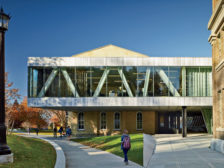Best Architecture Schools
Why the Lack of Black Students?
RECORD speaks to architecture students about the field’s diversity problem.
Read More
Special Report: Architecture Education Now
James Cramer's Gentle Manifesto to Improve Architecture Education
Read More
America's Best Architecture Schools 2012
DesignIntelligence’s annual “America’s Best Architecture & Design Schools” rankings are just out. Featured here are the top M.Arch. and B.Arch. programs.
Read More
Copyright ©2024. All Rights Reserved BNP Media.
Design, CMS, Hosting & Web Development :: ePublishing







